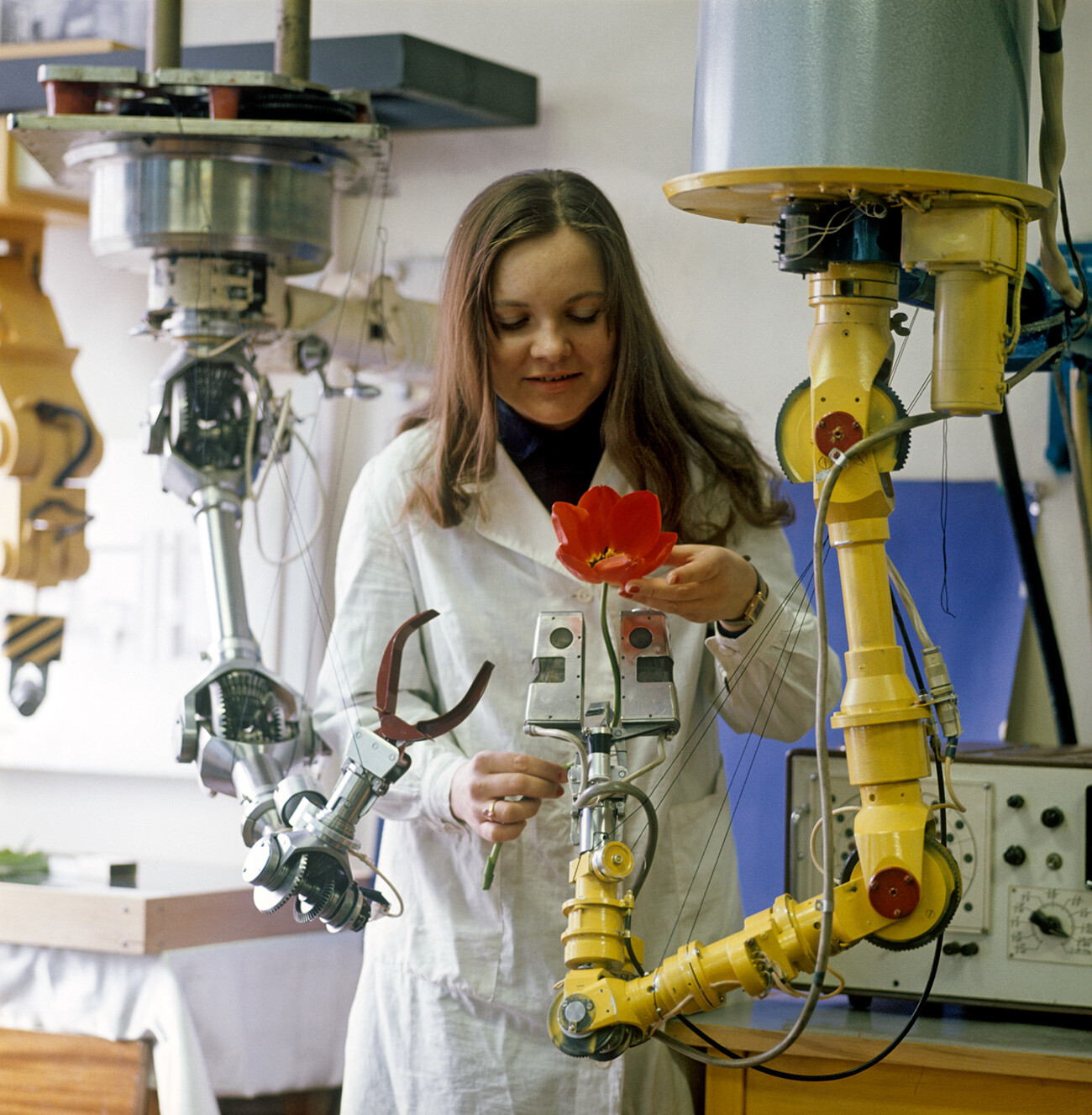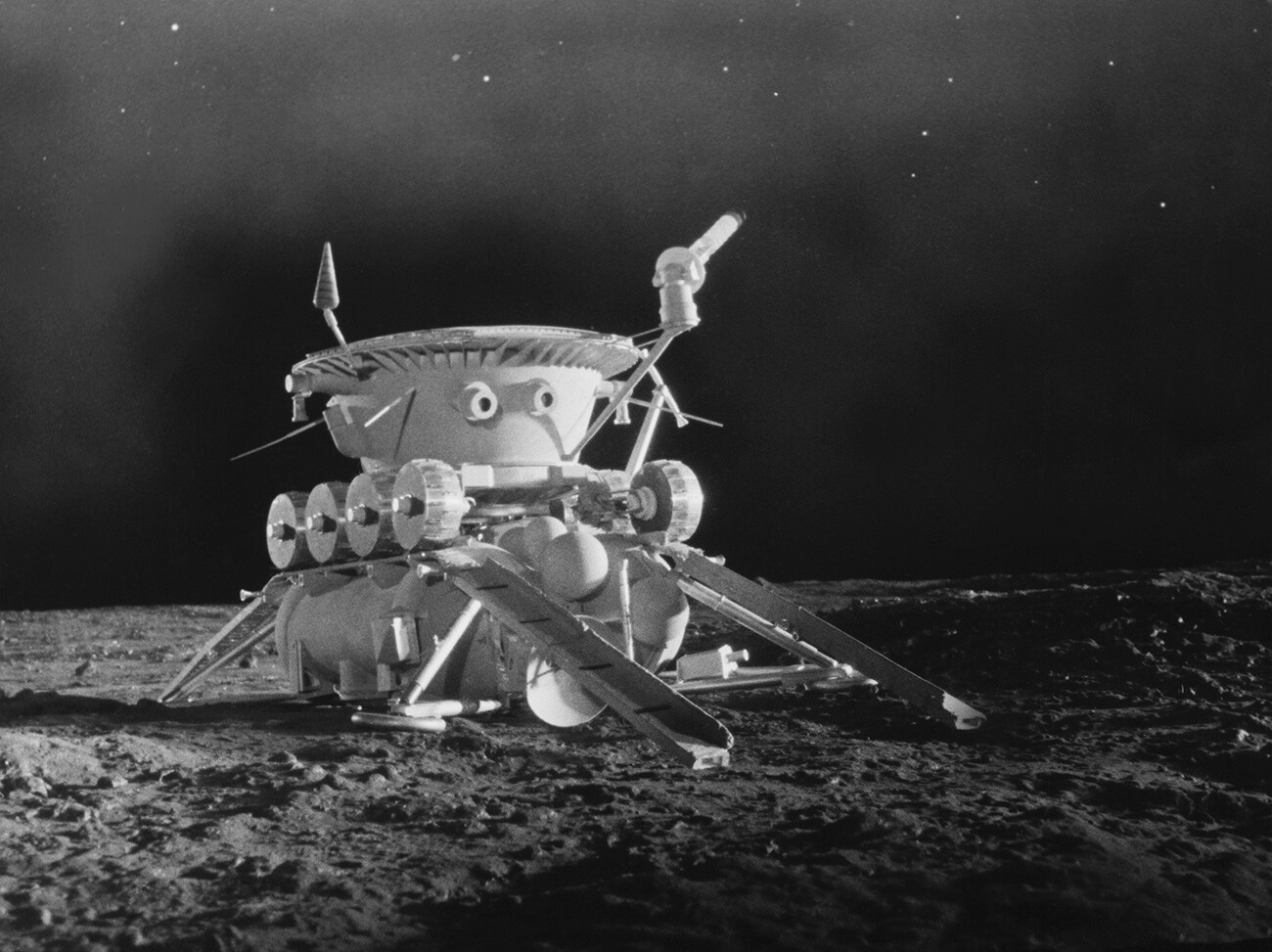What were the first Soviet robots like? (PHOTOS)

Pioneer of robotics
 ‘B2M’.
‘B2M’.
As Vadim Matskevich himself later wrote in the ‘Young Technician’ magazine, he became interested in robots after watching the movie ‘Loss of Sensation’ (1935). He told the adults at the regional center of young technicians about his idea and they gave him 20 sheets of tinplate and a dozen ball bearings. His ‘B2M’ robot was 1.2 meters tall, could do eight commands (eg. raise its hand, move to the light) and was controlled by remote control. The robot greatly impressed the regional administration and already in 1937, the ‘B2M’ went to the International Exposition in Paris.
 A “mechanical man” designed by Moscow schoolchildren at the entrance to the pavilion “Electrification of the USSR”. 1959.
A “mechanical man” designed by Moscow schoolchildren at the entrance to the pavilion “Electrification of the USSR”. 1959.
Matzkevich had a lifelong interest in aviation technology and, in the late 1950s, he became a mentor to a young technicians' center in Shchyolkovo near Moscow. In 1959, the young engineers already revealed their new robot at the VDNKh Exhibition Center. A special stage was built in front of the ‘Electrification’ pavilion, where the robot performed every two hours. It was 1.8 meters tall, could execute 18 commands by radio, could “see” and “hear”.
 A robot in the “Young Technicians” pavilion at the All-Union Exhibition of National Economic Achievements of the USSR.
A robot in the “Young Technicians” pavilion at the All-Union Exhibition of National Economic Achievements of the USSR.
The “descendant” of that robot interested not only Soviet citizens, but was also presented at the ‘Expo 70’ exhibition in Osaka, Japan. It was 2.6 meters high, weighed 220 kg and could execute 27 commands. And ithis one could even “dance”!
 A model of a robot made by young technicians of Shchelkovo.
A model of a robot made by young technicians of Shchelkovo.
The best robots of the Soviet Union
Since the 1960s, industry in the USSR began to be massively automated and more and more engineers, both beginners and experienced, began to develop robotics.
 Schoolchildren on a tour of the Polytechnic Museum.
Schoolchildren on a tour of the Polytechnic Museum.
In 1962, a ‘robot guide’ appeared in the Polytechnic Museum in Moscow.
Four years later, the ‘Technics for Youth’ magazine announced a competition for the best humanoid robot. The main prize was a motorcycle. The best works were shown in Moscow a year later.
 Boris Grishin with his ARS.
Boris Grishin with his ARS.
Boris Grishin, a drawing teacher from Kaluga, assembled an “automatic robot secretary” (‘ARS’). He originally designed it as a domestic helper for his elderly mother. The ‘ARS’ robot took calls, recorded messages, opened the door for guests and woke her up in the morning. It also had a serving table. The robot was recognized as the most complex and has been preserved to this day - it is on display at the State Museum of the History of Cosmonautics in Kaluga.
 A robot created by young technicians in Kaliningrad.
A robot created by young technicians in Kaliningrad.
The winner of the competition was the robot created by the enthusiasts under the guidance of Boris Vasilenko, a teacher from the Kalingrad Technical College. They presented a two-meter tall robot called ‘Neptune’ in a diving suit. It could move at a speed of up to 5 km/h, warn of danger (it had a counter for detecting radioactivity) and also bypass obstacles using a sonar.
 These small robots were created in Kaliningrad, too.
These small robots were created in Kaliningrad, too.
Robots for all jobs
Soviet scientists developed robots for almost every sector of the national economy. By 1980, the country had 6,000 industrial robots, more than 20% of the world's total. Robots worked in automobile factories, nuclear power plants, underwater and, of course, in space.
 Testing robotics, Leningrad, 1976.
Testing robotics, Leningrad, 1976.
It was in the USSR that the world's first planetary rovers were developed: lunar rovers, then Mars rovers, even Venus rovers.
In many institutes, faculties appeared where robotics was studied and design bureaus where new units were created.
 Soviet Union. Lunokhod I, first space vehicle on the 1970s.
Soviet Union. Lunokhod I, first space vehicle on the 1970s.


